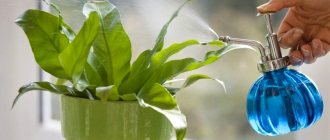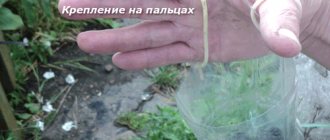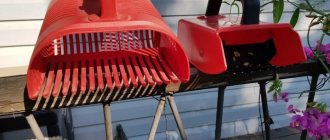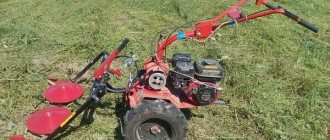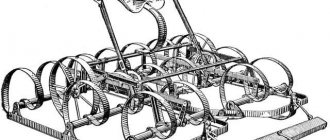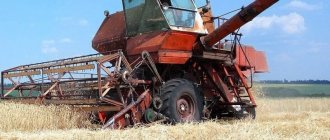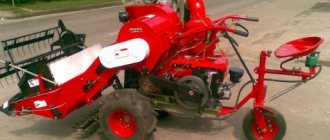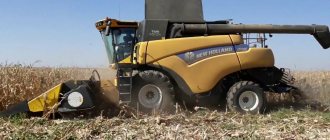For people who store large volumes of berries for personal use and sale, a berry harvester will be an excellent help in their work. This device has several varieties depending on the type of fruit being removed, its disadvantages and nuances of use.
What is a berry harvester?
When harvesting lingonberries, currants and even strawberries, a berry picking device will be a good assistant in your work. People call it a comb, a comb, and even a grabber. The device is made in the form of a bucket with teeth 10-20 cm long with an inter-tooth distance of 4-5 mm or a special tube in a vacuum version. The advantages of such a device are:
- With the help of the device, even a novice gardener will cope with the work 2-3 times faster. On average, per day, berry picking equipment helps to collect about 12-15 kg of crop, which is significantly more than using the manual method.
- Availability. The simplest models cost no more than $13.
- Possibility of self-production. The homemade device will have all the parameters a gardener needs: bucket depth, diameter between the teeth, etc.
Manufacturing instructions
From funds found at home, homemade devices for collecting forest gifts are made without drawings.
The dimensions and shape of the devices determine the dimensions of the plastic products (bottles, containers) from which the bucket is made. More complex products made from materials such as metal, wood, plywood are made strictly according to the scheme. First, patterns of all parts of the device are drawn on paper or cardboard, then they are transferred to metal or plywood sheets.
From sheet metal
A step-by-step description of the process of making a blueberry harvester with your own hands will help you in your work:
- take a galvanized sheet and apply the contours of the bucket body parts onto it according to a template;
- cut out all elements of the future design with metal scissors;
- Cut rods from wire (1-3 mm), at the comb of the scoop they will be the bottom and teeth;
- connect the body parts with rivets;
- Attach a curtain inside to the hinges; it will prevent the fruits from spilling out when picking;
- make a handle from a piece of pipe, flatten the ends and rivet them to 2 bent strips;
- Rivet the holder with handle to the body.
For the berries, sew a bag from coarse fabric and attach it with thin wire or rope to the body of the bucket. Bend the spoke teeth of the comb smoothly upward. How to fix the comb spokes is worth considering in detail.
Note! To make the hand comfortable, the steel handle is wrapped with several layers of electrical tape.
First, cut out 2 strips of galvanized steel, 3 cm wide and equal to the width of the comb. Fold each strip in half and cut 2 cm from each side of one half. On the fold, mark locations for holes with a pitch of no more than 5 mm.
Make cuts exactly according to the markings using an emery wheel. Insert wire into the holes of the first and second plates and solder them so that they do not fall out. Using a chisel and hammer, shorten the spokes to the same length and bend them.
Made of wood
Make a device for collecting berries from thick 9 mm plywood. Make a comb from old bicycle spokes or 3 mm wire. Place the templates of the body parts on a sheet and outline the contours. Using a jigsaw or hacksaw, cut out the blanks strictly along the drawn lines.
To make a comb, take a 18 * 18 mm strip and cut 2 bars. On each, along the center line, mark the locations for the holes with a pencil and drill. Maintain a distance of 5 mm between adjacent holes. Make comb teeth from wire:
- cut into equal pieces;
- bend each rod in half so that the edges of the teeth are rounded and do not injure the stems when harvesting;
- insert wire blanks into the holes of both bars.
Bend the comb teeth to the desired angle. Assemble the bucket parts according to the diagram. Attach the door handle to the upper wall of the housing.
From a plastic bottle
You can make a ladle from a plastic bottle in the forest if you have a knife, string and a marker with you. The volume of the container does not matter - the more, the better. The workpiece must be placed on the ground on the side that faces up, and the outline of the hole must be drawn. It should repeat the silhouette of the English letter “W”. Use a knife to cut a hole.
Make a stick of the required length from a thick branch. Attach it to the neck of the bottle, secure it with a rope or several layers of electrical tape. The instructions for using this comb are simple:
- holding the stick, pull the device through the bushes;
- sharp edges will cut off the fruits, which will fall into the container;
- Pour the berries into the bucket through the neck, having first unscrewed the lid.
It is better to make the hole closer to the bottom, the plastic in that place is denser, the edges of the teeth will be harder.
From a canister
To make the body, take a canister with a volume of 1-2.5 liters. Make the part without a handle the bottom. Cut teeth and transverse slots in it to filter out debris. For convenience, draw all the lines on the canister with a marker.
Cut holes with a construction knife. Maintain the standard interval between the knitting needles – 5 mm. When picking fruits, hold the scoop by the handle. To save time on pouring berries into the body (bucket), attach a bag or fabric bag to the opening of the canister with electrical tape.
Harvesting berries with a combine harvester
Harvesting lingonberries using a combine is convenient and quick, but the device for collecting berries also has a significant disadvantage - it is traumatic for plants. That is, a poor-quality device severely damages the bushes, leading to deterioration in fruiting next year and the complete extinction of the berry plant. Because of this, in some countries the use of a harvester for picking berries in forests is prohibited. However, if the collector uses certified devices with rounded teeth or special tips on them, like women’s stilettos, then minimal harm is caused to the environment.
Types of berry harvesters
The fruit picker can be used for harvesting fruits on an industrial scale and privately in the forest and on your own plot. The berry harvester can have different designs:
- Industrial mechanical models
are designed for harvesting on large plantations. They can be trailed or self-propelled. The equipment has high productivity and cost. - Hand-held devices
are intended for private use or small farms. The standards of such devices are Finnish fruit collectors, which are characterized by increased safety for plants and ease of use. - Vacuum devices
are also used in small areas, but instead of the usual combing of the crop from the bush, it is sucked into the device.
Mechanical berry harvester
On large berry plantations, special equipment is used. An industrial fruit picker can be:
- Trailed type
. They have shaking functions and a fan draft to sort the fruit from leaves and other unnecessary impurities. The harvested crop is delivered via a special conveyor to the final sorting point. The good thing about the devices is that they have several height settings and are suitable for picking both large fruits from trees and small bush fruits. - A self-propelled
berry harvester is designed for a specific harvest size. That is, the unit for picking cherries is not suitable for currants. A specialized machine harvests the crop in one pass, while the branches and leaves do not fall to the ground, but are collected in a special compartment. The downside of the device is its high price ($15-130 thousand), so this technique is used only on large plantations.
Manual berry harvester
The most common model is a manual blueberry harvester. This unit is made in the form of a ridge with a capacity for storing crops. The device is comfortable to hold in your hand. It is very simple to use - you just need to carefully move it over the bush. A manual berry harvester can be made from:
- Metal
. The devices are also called Finnish fruit pickers. They are characterized by increased strength and are designed for harvesting from bushes with hard branches, that is, those fruits that mainly grow in the northern regions: lingonberries, currants. - Plastics
. Such devices are lightweight and compact. However, the fragile plastic teeth can easily break from hard branches, so they are mainly used on strawberries, strawberries and other similar fruits.
Vacuum berry harvester
Often, when choosing a harvester for picking strawberries, lovers of sweet fruits choose the vacuum version. The device consists of:
- Berry receptacle with a volume of 12-15 liters with comfortable straps that can be worn on the shoulders.
- Air duct with manipulator tube of different lengths.
- A socket onto which attachments with different tooth lengths and interdental distances can be attached.
- The engine has a power of approximately 7500 rpm.
This device is valued by lovers of natural delicacies for:
- Ease of use
. - Speed
. A vacuum berry harvester copes with the task much faster than manual models. - Multifunctionality
. The device is capable of harvesting not only berries of different diameters, but also nuts.
Similar designs: rakes, scoops, shovels, combs and others
The principle of “picking” berries from herbaceous bushes is implemented in some devices, either simpler in design, or designed to further simplify the work of the picker.
It is made of wire, thread and a bag, but is very compact and is not inferior in ease of use to industrial options.
In these cases, the typical combine design is simplified for the fastest possible production. However, these options have their drawbacks. For example, the scoop has low sides and if accidentally tilted, the berries easily spill out of it. And wooden ladles get dirty quickly.
And, by the way, please note: even such complex designs can be made with your own hands. And if manufactured correctly, the resulting combine will be no worse than an industrial one
Therefore, it is worth saying a few words about how to correctly implement the basic principle in such a product.
How to choose a harvester for picking berries?
Each berry picking machine is designed for use on a specific type of shrub, so before purchasing you should consider:
- The area of the plantation from which the crop will need to be harvested. For personal preparations, a manual unit is enough, but when growing for sale, you cannot do without a vacuum device.
- The type of fruit collected. Here it is important to take into account their size and fragility, and the characteristics of their growth. For strawberries, more gentle devices are needed, while for cranberries, metal fruit pickers with fine teeth are suitable.
- The price of the device, because the device must justify its use.
Berry harvester - rating
In gardening stores you can purchase a combine harvester for picking berries such as cranberries, lingonberries, blueberries and blackberries in different price categories. Among the most popular models are:
- Finnish devices from the Marjukka brand
. Made from durable plastic with rounded teeth and no sharp edges. Cost about $12. - For children, the Marjukka brand
produces a special series of fruit pickers in the form of funny animals: frogs, foxes, hippopotamus and others. The cost of a plastic device is $7. - The Linden brand
is famous for budget devices made of soft plastic. It has a special damper that prevents the harvested crop from scattering. The device costs about $7. - "Hurry"
. The Russian-made combine called the harvester is distinguished by a spacious bag for the harvest and a special design of teeth, ideal for harvesting cranberries. Cost – $37. - A vacuum berry picker from AP BMP
, which facilitates and speeds up the harvesting process, costs about $450.
Similar designs: rakes, scoops, shovels, combs and others
The principle of “picking” berries from herbaceous bushes is implemented in some devices, either simpler in design, or designed to further simplify the work of the picker.
For example, the simplest options are ordinary wooden scoops with long teeth on the leading edge:
Some of their options are simplified as much as possible:
And some homemade models strike an excellent balance between simplicity, cheapness and functionality. For example, here's a combine:
It is made of wire, thread and a bag, but is very compact and is not inferior in ease of use to industrial options.
In these cases, the typical combine design is simplified for the fastest possible production. However, these options have their drawbacks. For example, the scoop has low sides and if accidentally tilted, the berries easily spill out of it. And wooden ladles get dirty quickly.
In other cases, inventors are working to make it possible to use a harvester to pick berries without bending over or crawling through the forest on your knees. The simplest option in this case is a special rake:
They can be used to comb the bushes without bending over, from time to time pouring the collected berries into a bucket.
A more complex option is to combine a rake and a combine. Simply put, the combine has a long handle that allows you to change the angle of the bucket itself. The video shows an example of such a device:
And, by the way, please note: even such complex designs can be made with your own hands. And if manufactured correctly, the resulting combine will be no worse than an industrial one
Therefore, it is worth saying a few words about how to correctly implement the basic principle in such a product.
How to use a harvester to pick berries?
The rules for using fruit pickers vary depending on the type of their design:
- The mechanical berry harvester
is controlled using a special remote control. The user sets the desired height and turns on the device. The device independently harvests the crop, and some models also sort out any debris. - Manual devices
are no less easy to use. It is important to place the device comfortably in your hands and move it from bottom to top along the bush. This way you can minimize the loss of leaves and small branches. It is important to empty the filled fruit compartment in a timely manner by pouring the harvest into an empty container. - the vacuum unit
and bring the tube to the berries. Empty the filled compartment with the harvest into an empty container, as in the previous version.
DIY berry harvester
You can make a primitive fruit picker yourself from scrap materials. The simplest berry harvester is made from a plastic bottle. To do this you need to take:
- A durable small plastic bottle, preferably for ketchup, kefir or milk.
- A wooden stick of a convenient length.
- Rope or cord.
- Scissors and stationery knife.
Work progress:
- You need to cut a special hole in the bottle of the required size for the W-shaped fruits. The edges of the hole will serve as a kind of teeth.
- The next step is to connect the bottle to a wooden stick using a rope or cord. It is important to firmly fix the structure so that it does not fall apart upon contact with strong branches.
- A simple, atraumatic device for the bush is ready for use.
